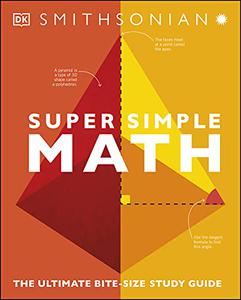Experiencing a major crisis from different viewpoints, step by step
The Suez crisis of 1956―now little more than dim history for many people―offers a master class in statecraft. It was a potentially explosive Middle East confrontation capped by a surprise move that reshaped the region for years to come. It was a diplomatic crisis that riveted the world's attention. And it was a short but startling war that ended in unexpected ways for every country involved.
Six countries, including two superpowers, had major roles, but each saw the situation differently. From one stage to the next, it could be hard to tell which state was really driving the action. As in any good ensemble, all the actors had pivotal parts to play.
Like an illustration that uses an exploded view of an object to show how it works, this book uses an unprecedented design to deconstruct the Suez crisis. The story is broken down into three distinct phases. In each phase, the reader sees the issues as they were perceived by each country involved, taking into account different types of information and diverse characteristics of each leader and that leader's unique perspectives. Then, after each phase has been laid out, editorial observations invite the reader to consider the interplay.
Developed by an unusual group of veteran policy practitioners and historians working as a team, Suez Deconstructed is not just a fresh way to understand the history of a major world crisis. Whether one's primary interest is statecraft or history, this study provides a fascinating step-by-step experience, repeatedly shifting from one viewpoint to another. At each stage, readers can gain rare experience in the way these very human leaders sized up their situations, defined and redefined their problems, improvised diplomatic or military solutions, sought ways to influence each other, and tried to change the course of history.



![S.T.A.L.K.E.R. 2 / STALKER 2: Heart of Chornobyl - Ultimate Edition (2024) [+UPDATE 23.12.2024 - v1.1.3] ElAmigos / Polska wersja językowa](https://i.postimg.cc/Zqd8RWGY/UZG8PBE.jpg)



















































![David Gilmour - Luck and Strange (2024) [FLAC]](https://i.imgur.com/everaBc.jpeg)
![Męskie Granie Orkiestra - Męskie Granie 2024 (2024) [FLAC]](https://i.imgur.com/FAyOxrM.jpeg)
![The Rolling Stones - Hackney Diamonds (2023) [FLAC]](https://i.imgur.com/wCkyyUN.jpg)
![Lady Gaga - Harlequin (2024) [FLAC]](https://i.imgur.com/dcgIA8D.jpeg)
![Natalia Kukulska - Dobrostan (2024) [FLAC]](https://i.imgur.com/bdljG3O.jpeg)
![Kaśka Sochacka - Ta druga (2024) [FLAC]](https://i.imgur.com/hORQKvn.jpeg)
![Kuba Sienkiewicz - Pani Bóg (2024) [FLAC]](https://i.imgur.com/qijCx8Z.jpeg)
![Lanberry - Heca (2024) [FLAC]](https://i.imgur.com/8P7QfeR.jpeg)
![Sara James - PLAYHOUSE (2024) [FLAC]](https://i.imgur.com/m4f8OKg.jpeg)
![Grzegorz Hyży - EPILOG (2024) [FLAC]](https://i.imgur.com/8DA2sBr.jpeg)
![Myslovitz - WIECZORAMI CHŁOPCY WYCHODZĄ NA ULICE (2024) [FLAC]](https://i.imgur.com/l9mMtIG.jpeg)
![Krzysztof Zalewski - ZGŁOWY (2024) [FLAC]](https://i.imgur.com/vh48RAc.jpeg)
![Krzysztof Cugowski - Wiek to tylko liczba (2024) [FLAC]](https://i.imgur.com/SBzgqe2.jpeg)
![Nosowska - Kasia i Błażej (2024) [FLAC]](https://i.imgur.com/mObvVXQ.jpeg)
![sanah - Pianinkowe Kaprysy (2024) [FLAC]](https://i.imgur.com/pVjjPAa.jpeg)
![Kwiat Jabłoni - Pokaz slajdów (2023) [FLAC]](https://i.imgur.com/diERHfZ.jpg)
![Robert Cichy - Spacer po Warszawie (2024) [FLAC]](https://i.imgur.com/ixleU9o.jpeg)
![Viki Gabor - Terminal 3 (2024) [FLAC]](https://i.imgur.com/Q1KCnDs.jpeg)
![Sanah - Kaprysy (2024) [FLAC]](https://i.imgur.com/71OZm4h.jpeg)
![Męskie Granie Orkiestra - Męskie Granie 2023 (2023) [FLAC]](https://i.imgur.com/U4YHo8d.jpg)




